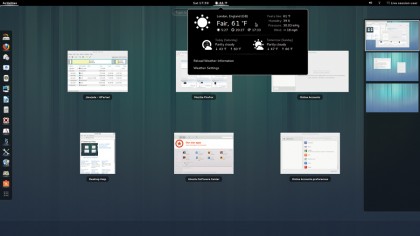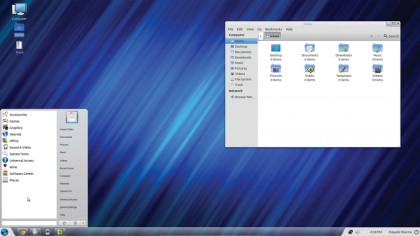Ubuntu derivatives: 5 of the best Ubuntu-based distros
Our pick of the best Ubuntu re-spins
Zorin is the only distro in this roundup that lets you view content in proprietary formats from within the live environment. At 1.5GB, Zorin is the heaviest distro. Besides the apps already mentioned, it includes Gimp, Shotwell, Google Chrome, Gwibber, Thunderbird, Empathy, Totem, Rhythmbox, VLC and even the OpenShot video editor. It also includes Wine to install Windows-only apps.
Unless you are using Zorin, you'll need to pay a visit to the distro's package management app soon after installing. In Bodhi, it's the first thing you'll need to do, while Lubuntu, Ubuntu Gnome and Kubuntu can give you a fair amount of mileage with their default selection.
Verdict
Ubuntu Gnome - 3/5
Kubuntu - 3/5
Lubuntu - 4/5
Bodhi Linux - 1/5
Zorin - 5/5
Intended purpose

The distros we've chosen provide a different GUI to Unity, but they each ensure the distro works well for its intended audience.
The aim of the Ubuntu Gnome spin is to provide a relatively pure Gnome desktop. Since the main Ubuntu distro still uses libraries from Gnome 3.6, Ubuntu Gnome 13.04 ships with an older Gnome release, and users will have to manually install the latest Gnome from the Person Package Archive (PPA). Users will also miss out on new Gnome apps, such as Boxes and Web, which depend on libraries from the latest release.
Kubuntu does for KDE what Ubuntu Gnome does for Gnome Shell. But Kubuntu nicely integrates the KDE desktop. That said, it doesn't include all apps developed by the KDE project, most notably the Calligra Office Suite.
Get daily insight, inspiration and deals in your inbox
Sign up for breaking news, reviews, opinion, top tech deals, and more.
The Lubuntu developers wanted to create a less resource-hungry distro and LXDE fits the bill. Lubuntu also includes software like Mplayer, which makes it more usable than its peers.
Bodhi Linux is also a lightweight distro, but encourage users to customise the system, handled nicely by its package management system.
Lastly, Zorin OS is designed for Windows users, and pulls this off brilliantly thanks to its default interface and the custom Look Changer app.
Verdict
Ubuntu Gnome - 2/5
Kubuntu - 4/5
Lubuntu - 5/5
Bodhi Linux - 5/5
Zorin - 5/5
Desktop Experience

Before Unity, Ubuntu was the most popular Linux distro for desktop users - and for good reason. It has the best-in-class Ubiquity distro installer, as well as an easy-to-use package management system that allows users to upgrade with a single click. All distros in this roundup share the same lineage. While some need more resources to run comfortably, what sets them apart from Ubuntu and each other is how they look, and how you operate them. This is also the main reason why you would want to use an Ubuntu derivative instead of the real thing.
The questions were asking are: do the spins appeal to new Linux users coming in from other OSes, such as Windows and Mac OS? And if you're an existing Linux user, who had Ubuntu in the past, which spin returns to the pre-Unity days?
Ubuntu Gnome - 2/5
If you were disappointed by Unity, then the desktop environment Ubuntu Gnome offers is unlikely to make you happy either. There are a number of similarities between Gnome 3 and Unity, although they each go about implementing them differently. If you dislike Unity's vertical launcher, you probably won't be that keen on the similar launcher in Gnome. And while the launcher in Unity is always visible, in Gnome you have to bring up the Activities View before you can even see it.
Gnome's other low points are minimal window furniture and the inability to create desktop icons, which make it a distro that's only likely to please existing Gnome users. In fact, even existing Gnome users won't like this spin, because it ships with the older Gnome 3.6.
With almost two decades of writing and reporting on Linux, Mayank Sharma would like everyone to think he’s TechRadar Pro’s expert on the topic. Of course, he’s just as interested in other computing topics, particularly cybersecurity, cloud, containers, and coding.
